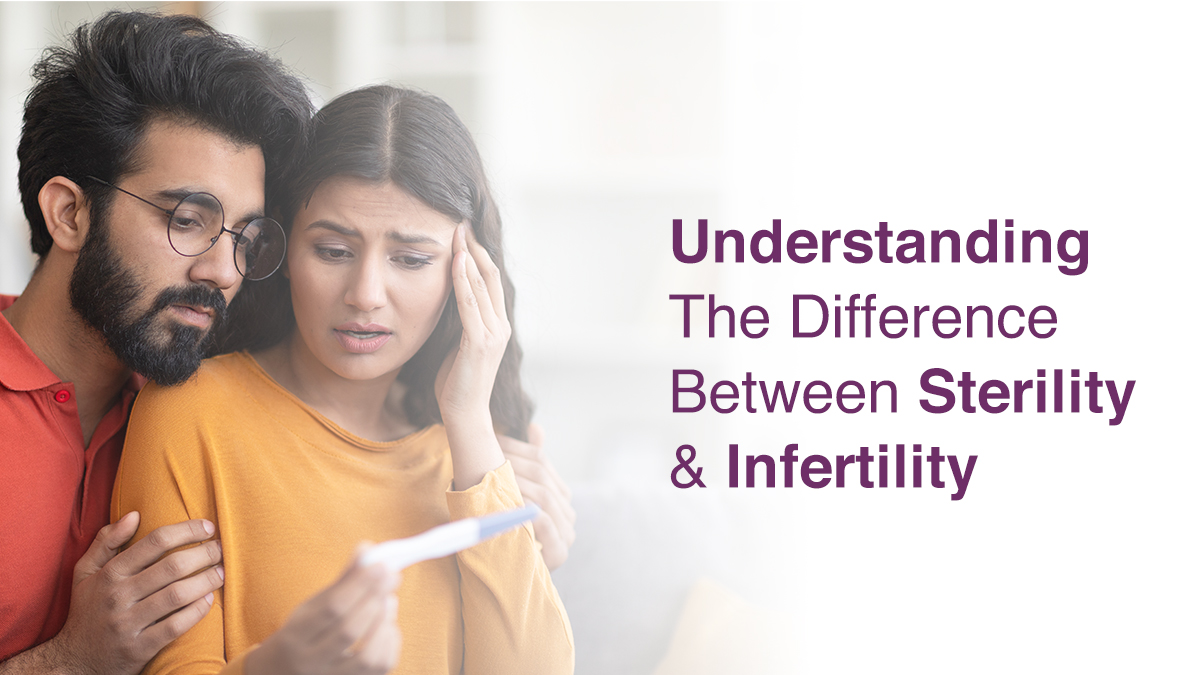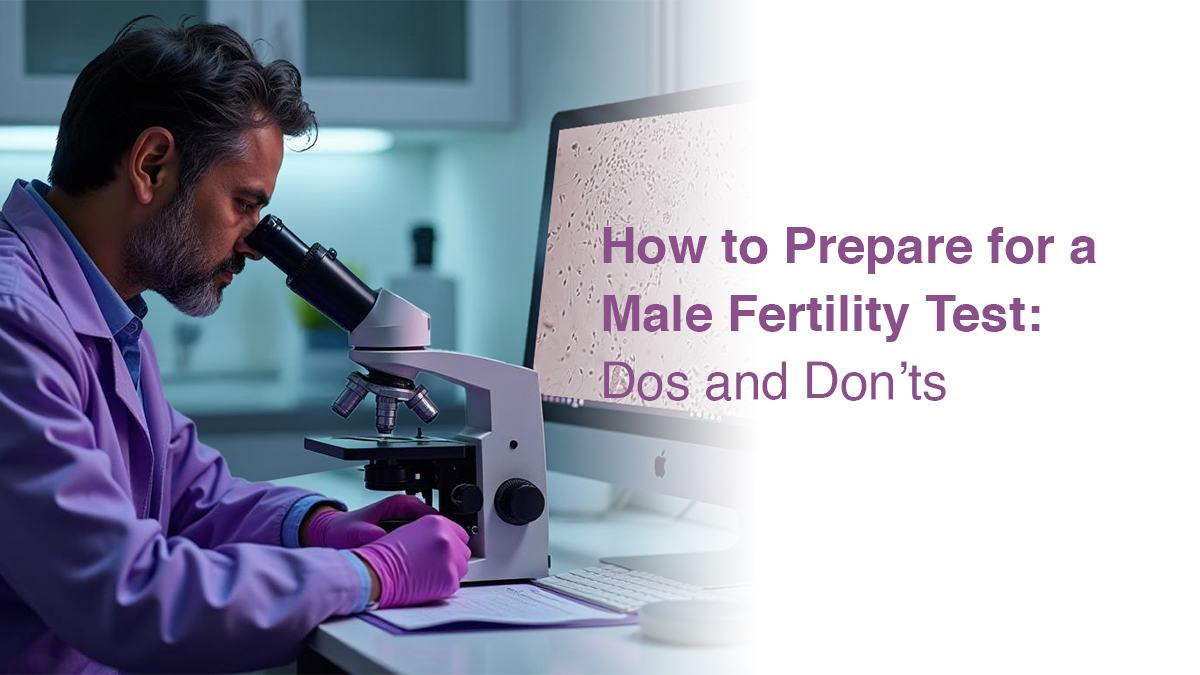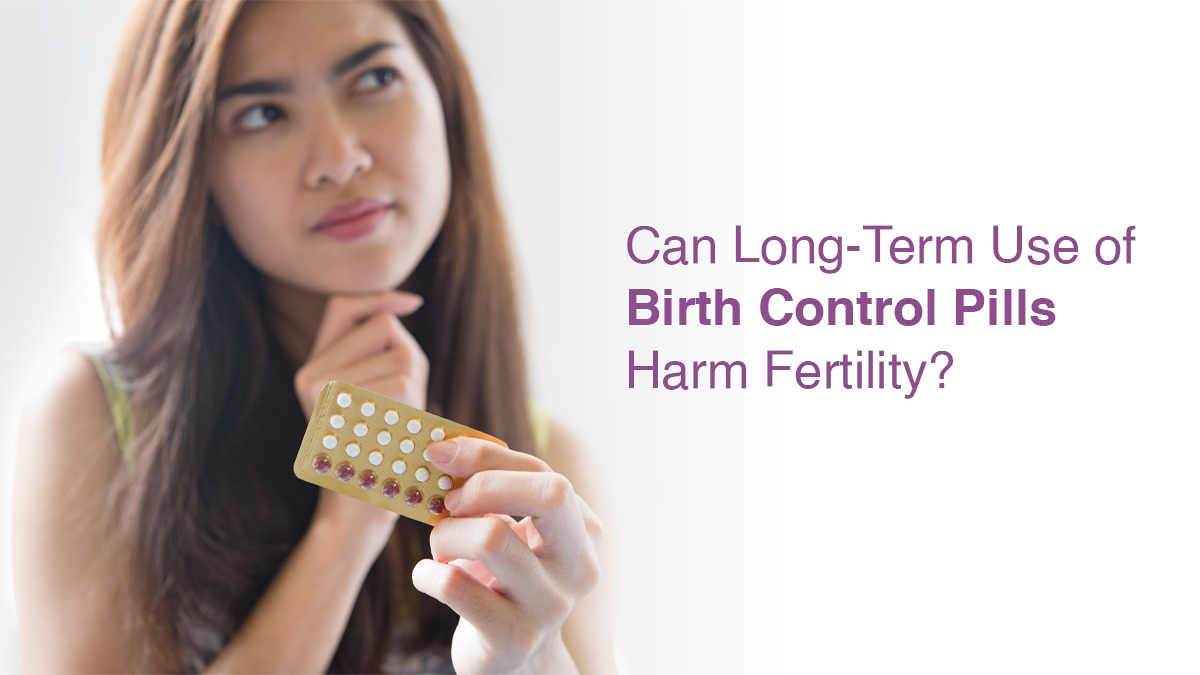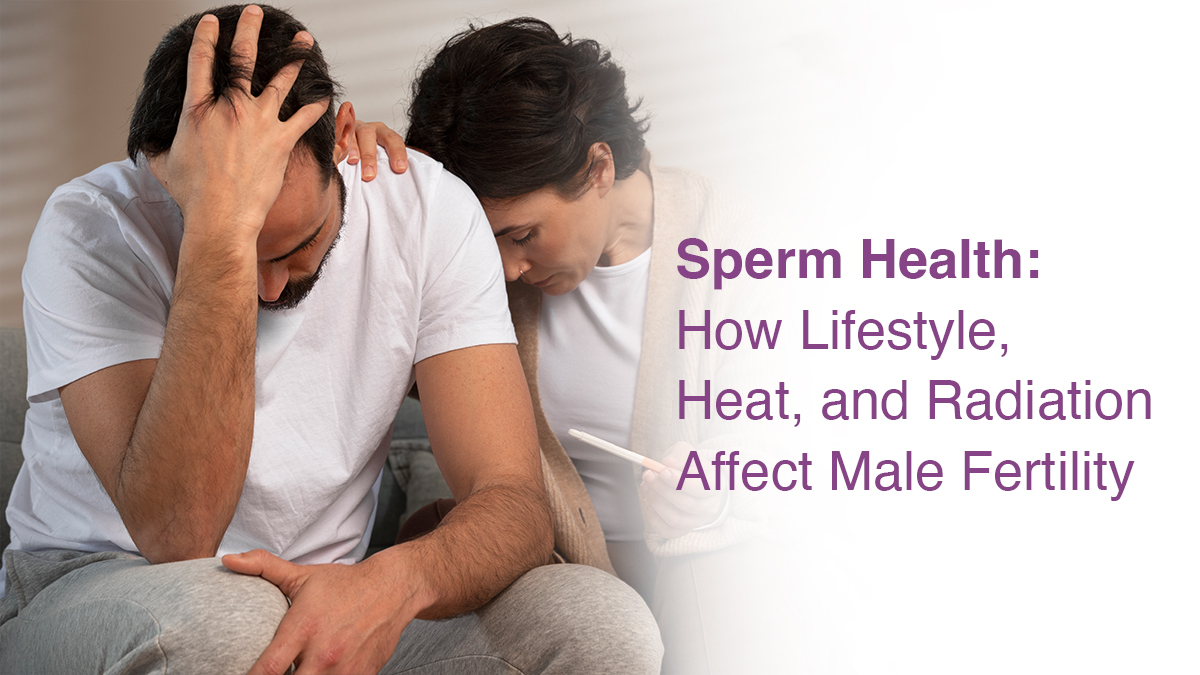
Understanding The Difference Between Sterility and Infertility

Fertility is the innate ability in both men and women to conceive and deliver children. In women, fertility includes ovulation regulation, hormonal control, and healthy reproductive organs. In men, it depends on the production of healthy sperm, motility, and function.
It may be affected by health, lifestyle factors, genetic disorders, complications of the reproductive system, position of the individual’s reproductive organs, previous sexual history, and age. Consistently failing to conceive could be a sign of infertility, which implies difficulties in becoming pregnant. However, the total inability to conceive is referred to as sterility. Seeking the right diagnosis and treatment requires an understanding of these differences.
What is Sterility?
A person who is sterile is medically unable to become pregnant on their own without help. In females, it may involve the absence of ovulation, whereas in males, it is associated with a variety of reproductive disorders or the lack of sperm in semen. This may be due to congenital malformations or surgical procedures such as tubal ligations or vasectomies. The most common presentation of sterility is an inability to conceive. Sterility means a more serious defect in the reproductive process than infertility.
There are many types of sterility. Primary sterility is the inability to conceive from the start, whereas secondary sterility occurs after at least one successful pregnancy. Relative sterility results from treatable issues like infections or hormone imbalances, while absolute sterility is brought on by permanent disorders such as the lack of reproductive organs. Congenital anomalies, infections such as pelvic inflammatory disease, lifestyle choices like smoking or obesity, and illnesses like endometriosis or azoospermia are common causes. Men with total azoospermia due to genetic disorders like Klinefelter syndrome or women born without a uterus are individuals who are sterile.
What is Infertility?
Infertility is the inability to conceive following a period of consistent, unprotected sexual activity. Both men and women can be affected by this disorder, which can be brought on by several components that disrupt the reproductive process. The term “infertility” may not necessarily refer to a total lack of fertility; rather, it describes challenges in becoming pregnant in an acceptable amount of time.
There are two types of infertility: primary and secondary. The inability to conceive following a year of consistent, unprotected sexual activity without any previous pregnancies is known as primary infertility. When a couple has difficulty becoming pregnant after successfully conceiving once, it is referred to as secondary infertility. Ovulation problems, hormonal imbalances, blocked fallopian tubes, low sperm count, poor sperm motility, and lifestyle variables like stress, obesity, and smoking are some of the causes of infertility in women and men. Medical conditions such as endometriosis, varicocele in men, and polycystic ovarian syndrome (PCOS) are other causes. A woman with PCOS-related ovulation problems or a man with varicocele-related low sperm count are individuals struggling with infertility.
Key Differences Between Sterility and Infertility
Let’s look into the significant distinctions between sterility and infertility:
A. Possibility of Conception
Sterility refers to a complete inability to conceive, which makes conception impossible in any situation. While infertility poses challenges and roadblocks to the path of pregnancy, it is still possible to conceive with medical help or a change in lifestyle.
B. Cause
Sterility can be due to irreversible causes, including severe congenital defects or the lack of reproductive organs. Treatable problems such as ovulation difficulties, low sperm count, hormone imbalances, or transient obstructions in reproductive pathways can cause infertility.
C. Treatment Options
The underlying reason determines the available treatment options for infertility in males and females. While lifestyle modifications like eating a nutritious diet, giving up smoking, and managing stress might increase fertility, drugs can treat hormonal imbalances in males that impact sperm production or motility. Reproductive function may be restored by surgical procedures like vasectomy reversal or varicocele treatment. Additionally, assisted reproductive technologies (ART), such as intracytoplasmic sperm injection (ICSI) and intrauterine insemination (IUI) can prove to be successful.
D. Diagnosis
When there is conclusive proof of irreversible reproductive problems, including organ removal or genetic abnormalities, sterility is determined. Diagnosis of infertility involves a thorough assessment of hormone levels, ovulation cycles, or semen analysis which is tested after a year of failed attempts at conception.
When to Seek Medical Advice?
A couple should consult a doctor if, after a year of consistent, unprotected sexual activity, they are still unable to conceive. Since fertility naturally declines with age, this period is shortened to six months for women over 35. If there are recognised risk factors—such as irregular menstrual cycles, significant menstrual pain, a history of pelvic inflammatory disease, or a history of miscarriages—immediate consultation is advised. Men who have experienced testicular trauma, surgery, or ailments like reduced libido or erectile dysfunction should consult a doctor. Effective identification and treatment of underlying problems can be facilitated by early examination.
Conclusion
It is essential to comprehend sterility, infertility, and fertility to properly deal with reproductive difficulties. The likelihood of becoming a parent can be considerably increased with early medical intervention and tailored treatment. You can avail more information based on your situation from our fertility specialists at an Oasis Fertility Clinic near you promptly. Additionally, you can use live chat or call 1800-3001-1000 for prompt assistance.


fill up the form to get a
Free Consultation
Avail 0% interest on EMI
All Procedures | No Upper Limit
How we reviewed this article:
- Current Version
- February 4, 2025 by Oasis Fertility
- https://www.novaivffertility.com/fertility-help/what-difference-between-sterility-and-infertility
- https://onphospitals.com/blogs/difference-infertility-sterility/
- https://www.garbhagudi.com/blogs/difference-between-sterility-and-infertility
- https://www.indiaivf.in/blog/difference-between-sterility-and-infertility/?srsltid=AfmBOop3YeSDBN9OYcJuTiXzYEG2Zs7Z1iS_mLEmFJqASDcNF8ZBImwY






